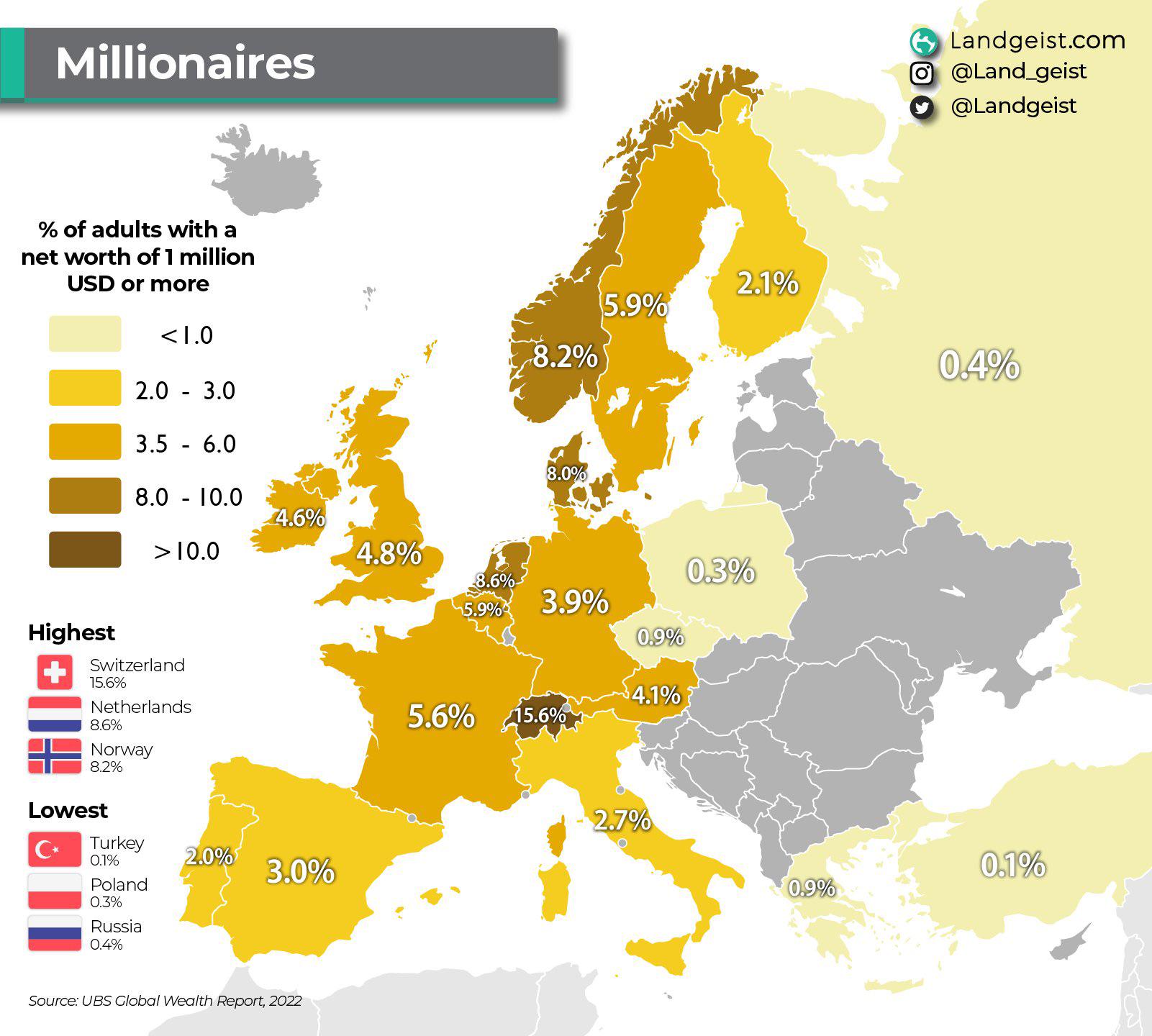Millionaire Population Percentage Map of Europe


Alex Cartwright
Senior Cartographer & GIS Specialist
Alex Cartwright is a renowned cartographer and geographic information systems specialist with over 15 years of experience in spatial analysis and data...
Geographic Analysis
What This Map Shows
This map visualizes the percentage of millionaires within various European countries, offering a clear perspective on wealth distribution across the continent. It highlights which nations host the highest concentrations of millionaires—individuals whose net worth exceeds one million dollars—and serves as a valuable tool for understanding economic disparities and wealth concentration within Europe.
Deep Dive into Millionaire Demographics
Have you ever wondered what drives the concentration of millionaires in certain regions? The phenomenon of wealth concentration can be attributed to several factors, including economic stability, favorable tax policies, and a thriving business environment. In Europe, countries like Switzerland, Germany, and the United Kingdom stand out as havens for millionaires. Interestingly, Switzerland consistently ranks as one of the countries with the highest percentage of millionaires, often exceeding 10% of its adult population. This can be largely attributed to its robust banking sector, high standard of living, and attractive fiscal policies.
Moreover, the overall economic landscape plays a critical role. Countries that have seen significant economic growth in recent years, such as Germany, have also witnessed a rise in the number of millionaires. The German economy, characterized by a strong industrial base and a focus on exports, has fostered an environment where wealth can accumulate. In contrast, nations facing economic challenges, such as Greece and Spain, show lower percentages of millionaires, reflecting the struggles of their economies.
Additionally, these demographic patterns reveal a lot about urbanization trends. Cities like London and Paris are not only cultural hubs but also epicenters for wealth. The high cost of living and real estate prices in these cities often correlate with a higher number of millionaires residing there. Interestingly, the urban development patterns in these cities create environments conducive to wealth accumulation, showcasing how geographical factors intertwine with economic success.
Regional Analysis
Looking at the map, we can break down the wealth distribution into several distinct regions. For instance, Northern Europe, particularly the Scandinavian countries, shows a surprising trend. While countries like Norway and Sweden boast high living standards, their millionaire percentages hover around the lower end compared to their southern counterparts. This phenomenon raises questions about the impact of egalitarian policies and wealth distribution practices that prioritize social welfare over individual wealth accumulation.
In Southern Europe, countries like Italy and Spain depict a stark contrast. Although they have historically rich cultures and thriving economies, their percentages of millionaires are lower, likely due to economic fluctuations and higher unemployment rates in recent years. Furthermore, Eastern European nations are still on the rise, with increasing numbers of millionaires as their economies develop and integrate more deeply into the European Union.
Significance and Impact
Understanding the distribution of millionaires in Europe is not just a matter of statistics—it's about grasping the broader implications of wealth inequality. The concentration of wealth can influence political power, access to resources, and social mobility. For instance, countries with higher percentages of millionaires often have stronger lobbying powers and greater influence over government policies, which can perpetuate wealth inequality and limit opportunities for lower-income groups.
Moreover, current trends suggest that the number of millionaires is on the rise, particularly as economies bounce back from global challenges. Projections indicate that by 2025, we may see even further increases in millionaire populations in countries like France and Italy, driven by recovering markets and new entrepreneurial ventures. However, this also raises concerns about the sustainability of such wealth concentration and its long-term effects on society.
In conclusion, the millionaire population percentage map of Europe not only reveals intriguing insights about wealth distribution but also prompts a deeper examination of the socio-economic factors that contribute to such disparities. As we navigate the complexities of wealth and its impact on societies, this map serves as a vital resource for understanding the current landscape and anticipating future trends.
Visualization Details
- Published
- August 16, 2025
- Views
- 210
Comments
Loading comments...